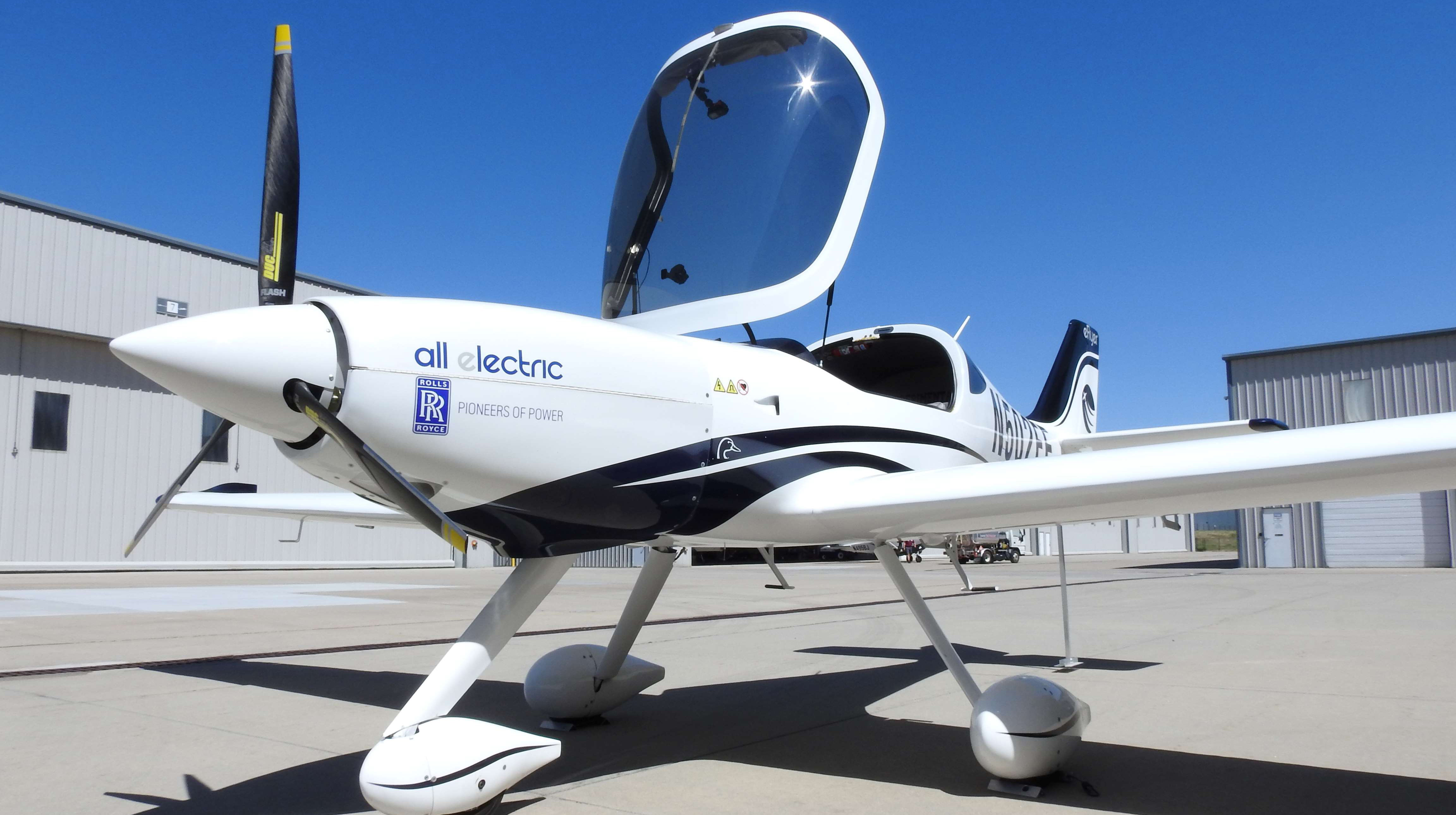
Denver-based Bye Aerospace announced June 22 that three propellers are being considered for the eFlyer 2, an all-electric two-seater designed for the flight training market.
“The prototype Rolls Royce electric motor currently on the eFlyer 2 technology demonstrator has varying torque and a large RPM range with a relatively small size and cross-section compared to a conventional internal combustion engine,” Bye Aerospace CEO George Bye said in a news release. Therefore, more of the propeller length is available to provide thrust across a broad range of RPM. So we will be conducting flight tests with the various propellers over the summer against these beneficial and unique electric propulsion criteria.”Bye completed the critical design review phase for the eFlyer 2 on June 5, a significant milestone in his company’s quest to be the first manufacturer to certify an all-electric aircraft under Part 23. A four-seat eFlyer 4 design is also being developed for a somewhat broader range of missions. Bye, who has been working toward electric certification for years, has consistently expressed optimism that battery technology will also advance in the next few years and extend the endurance of all-electric aircraft sufficiently to get them beyond local flights.
A California company has put its chips all-in on hydrogen. ZeroAvia, which has captured its share of media attention for developing electric powerplants for larger aircraft including a Piper M350 that first flew in 2019, earned another round of media attention with news of the first flight of a similar test bed in the United Kingdom.
Hydrogen goes much farther than currently available batteries, in terms of the energy stored per unit of weight and aircraft endurance. ZeroAvia hopes to scale up to certification of an aircraft with up to 20 seats within three years, followed by a 50- to 100-seat model by 2030.
Italy’s Tecnam announced its own alternative power solution June 24, via YouTube, with a video that details a hybrid-electric propulsion system that would marry a Rotax combustion powerplant with a Rolls-Royce electric motor. The High Power High Scalability Aircraft Hybrid Powertrain (H3PS) project, funded by the European Union, aims to develop this solution to reduce emissions by requiring a lower-horsepower combustion engine that can be boosted in climb by the electric motor. Batteries (a much smaller bank of batteries than an all-electric aircraft requires) could then be charged in cruise flight.
“The H3PS project objective is to fly a GA aircraft with the parallel hybrid electric powertrain demonstrating the challenging advantages of the configuration but also its high scalability level,” Tecnam noted in the video description. “‘Breakthrough’ concept will be achieved by demonstrating the feasibility of” airplanes with up to 11 seats.
"electric" - Google News
June 26, 2020 at 12:00AM
https://ift.tt/3eAs3kD
Competing visions for electric propulsion advanceCompeting visions for electric propulsion advance - AOPA Pilot
"electric" - Google News
https://ift.tt/2yk35WT
https://ift.tt/2YsSbsy
Bagikan Berita Ini














0 Response to "Competing visions for electric propulsion advanceCompeting visions for electric propulsion advance - AOPA Pilot"
Post a Comment